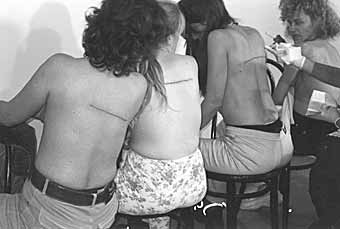
It is oftentimes the case that a society’s visible crimes tend not to be a reflection of the morality or character of the individuals that commit them, but a direct reaction to and manifestation of the more invisible and insidious institutional crimes committed to them by society’s more privileged, upper class citizens. Crimes such as prostitution, burglary, and drug-dealing are easy to see in society and are usually committed by the lower-class driven to crime due to desperate means. The rhetoric most of society adopts to refer to these individuals is hostile and cruel, sending the message that those individuals deserve the punishments and incarceration imposed on them by the justice system because they should have known better. What about the less visible white collar or structural crimes that tend to be the cause of the more lower-class visible crimes? The perpetrators of white collar and structural crimes usually don’t serve the same long sentences or harsh punishments placed on lower-class perpetrators. This begs the question of whether the visibility or lack thereof of certain crimes is what dictates stricter punishments.
The problem with a lack of visibility for high-class, institutional crimes is that it makes it harder to dismantle and begin to fix them. The classic phrase of not being able to fight against something you can’t see comes to mind when examining these crimes. They also tend to be more sophisticated and nuanced than lower-class crimes making them more difficult for society to understand. This only adds to the cloak of confusion and invisibility surrounding these offenses.
When studying the work of antagonistic artists such as Santiago Sierra, one begins to see how the nuances and mysteries of high-class invisible crimes are revealed. The always shocking and often grotesque pieces of performance artists, like Sierra, almost serve as a microcosm for how more visible lower class crimes are byproducts of society’s higher-class structural crimes.
The work of performance artists, like Sierra’s, are highly controversial because of their tendency to cross the line into criminal territory. One of Sierra’s pieces involved compensating prostitutes with heroin to allow him to tattoo a 160 cm line across all of their backs in front of an audience. Objectively, the fact that Sierra took advantage of these prostitutes by paying them with drugs to mutilate their bodies for his performance piece, can be seen as nothing but criminal. However, the performance piece reveals the larger structural inequities and crimes through a much more visible crime because their compensation for their participation in the piece directly parallels their compensation for their prostitution work. Sierra’s artwork turned itself into a microcosm for how the visible crimes amongst society’s lower class are a result of the invisible structural crimes of inequality present behind the curtain of society.
When looking at works like Sierra’s as a tool to bring crimes of structural inequality to light and public critique, a question arises as to whether the crimes often committed during these performance pieces can be justified. These pieces obviously don’t solve any of the problems created by structural inequality and they often look ugly, are shocking, and take advantage of the underprivileged. Many don’t even consider these pieces to be classified as artwork. It is interesting to ponder, though, whether this type of performance art ultimately furthers the campaign to dismantle invisible high-class, structural crime because it shoves the ugly effect of that crime in front of the public’s face and allows people to start thinking of the many nuances and complexities of that type of crime.

I’d never heard of this artist before but that is extremely interesting. It makes me think about this difficulty I always have when it comes to talking to people who are, in that moment, in a less privileged status than I am — whether socially, or in terms of our situational roles (like when I lived at UCSD and would talk to the cleaning people who came to the student apartments). As a more or less privileged person, I feel like you can’t help but be deeply aware of how life has put you in this position where you are ‘above’ someone else who is, for all intents and purposes, of the same exact human value as you. I wonder if Sierra felt this while tattooing the backs of all these sx workers.
I’d never heard of this artist before but that is extremely interesting. It makes me think about this difficulty I always have when it comes to talking to people who are, in that moment, in a less privileged status than I am — whether socially, or in terms of our situational roles (like when I lived at UCSD and would talk to the cleaning people who came to the student apartments). As a more or less privileged person, I feel like you can’t help but be deeply aware of how life has put you in this position where you are ‘above’ someone else who is, for all intents and purposes, of the same exact human value as you. I wonder if Sierra felt this while tattooing the backs of all these sex workers.